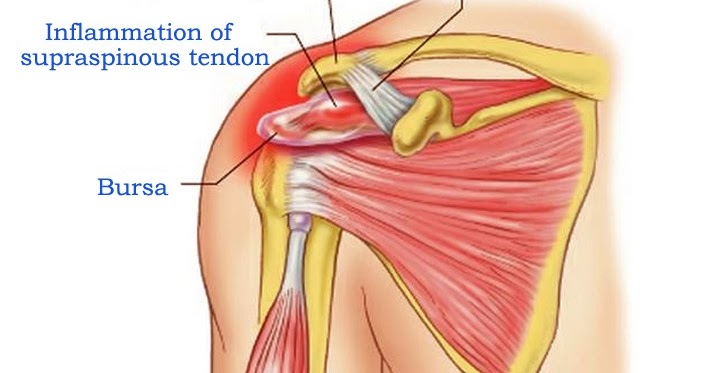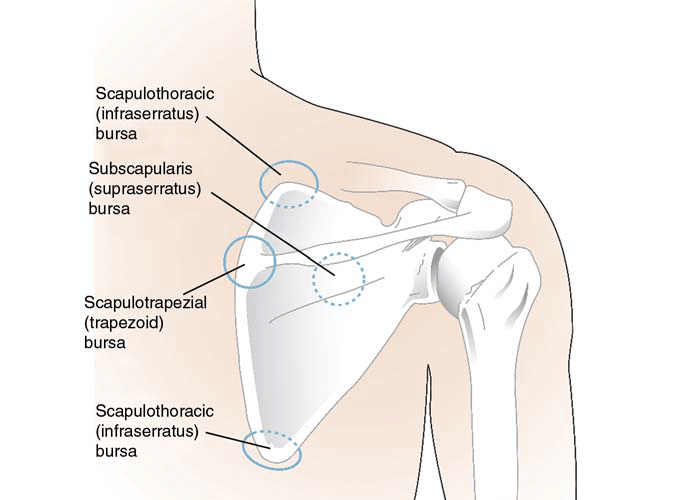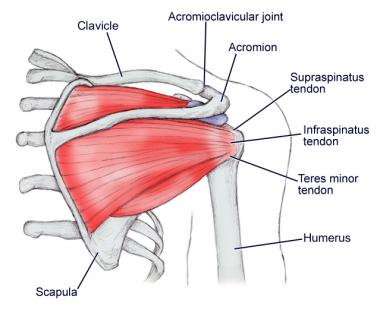- March 13, 2024

Diabetes and Frozen Shoulder
Our shoulder is made up of three bones: The shoulder blade, the collarbone, and the upper arm bone or humerus. The shoulder has a ball-and-socket joint. The round head of the upper arm bone fits into the socket. Connective tissue (shoulder capsule) surrounds the shoulder joint. It is the synovial fluid that reduces the friction in the joint and makes the joint mobile. Though it is often overlooked, musculoskeletal diseases are one of the most common side effects in patients with diabetes. Musculoskeletal ailments associated with diabetes are strong enough to inflict both physical and psychological harm. Frozen shoulder (also ...
Read More
Read More

Supraspinatus Tendinopathy
Supraspinatus tendinopathy is a common and crippling condition that becomes more prevalent after middle age. It is a common cause of shoulder pain. The supraspinatus tendon lies in the subacromial space and is a part of the rotator cuff muscles. Overuse of the supraspinatus tendon is attributed to be the principal factor that predisposes to this condition. Supraspinatus tendon of the rotator cuff becomes degenerated most often as a result of repetitive stresses and overloading during sports or occupational activities, paving the way for tendinopathy. The tendon of the supraspinatus commonly impinges under the acromion as it passes between the ...
Read More
Read More

Superior and Anterior-Superior Migration of the Shoulder
Awkward postures and repetitive work have been attributed to shoulder fatigue. Superior and anterior-superior migration of the shoulder is quite concerning as it implies disruption of rotator cuff. If timely treatment is not sought, the condition will aggravate. Characteristics of a rotator cuff tear such as a larger size has been associated with superior and anterior-superior migration of the shoulder. When a rotator cuff tendon tears, it can allow the ball of the shoulder joint to move upward or outward from the socket. This results in superior and anterior-superior migration of the shoulder. This can lead to loss of shoulder ...
Read More
Read More

Snapping Scapula
Shoulder blade or scapula is an amazing anatomical structure. What makes it amazing is it is suspended over the ribs between the spine and the arm by only two ligaments. There is no real joint between the scapula and the trunk. It is supported by three layers of muscle (superficial, intermediate, and deep) and bursae. Bursae are small fluid-filled sacs designed to lessen the friction between muscle, tendons and bones. The layers of the muscle form a smooth surface for the muscle to move, glide and rotate over. As there is movement without an actual joint, this connection is considered ...
Read More
Read More

Structure of the Shoulder Joint
Our shoulder is the most mobile joint in the body. It is this flexibility of the shoulder that provides the upper extremity with tremendous range of movement that allows us to reach objects overhead as well as behind our back.Being a very mobile joint, shoulder requires considerable support from surrounding muscles and tendons to discharge its function seamlessly. On the contrary, being a very flexible joint, shoulder is not as stable as some other joints in our body such as hip joint. So there is no surprise that shoulder is prone to injury, dislocation and separation. Apart from that, many ...
Read More
Read More

Bones of the Shoulder
Shoulder is the meeting place of three bones viz. clavicle, scapula and humerus. The junction of these three bones and the chest bone (sternum) form three joints: Glenohumeral joint: It is the shallow ball-and-socket style joint created by the humerus and scapula. This joint allows the arm to rotate circularly and to move up and out of the body. Glenohumeral joint is surrounded by soft tissue and strengthened by fibrous ligaments. Acromioclavicular joint (AC joint): This joint is the highest point of the shoulder. It is because of this joint that we are able to raise the arm above the ...
Read More
Read More



